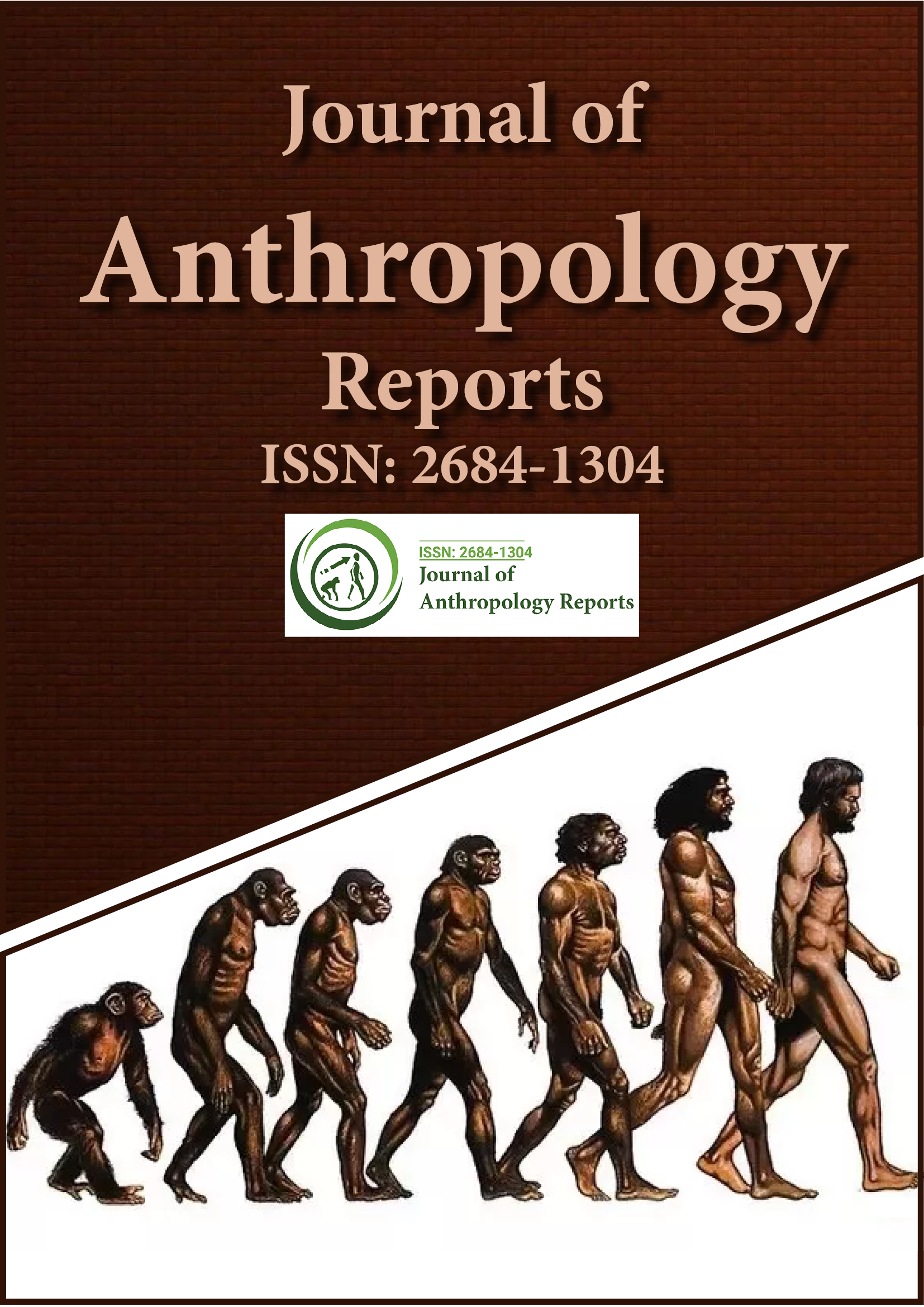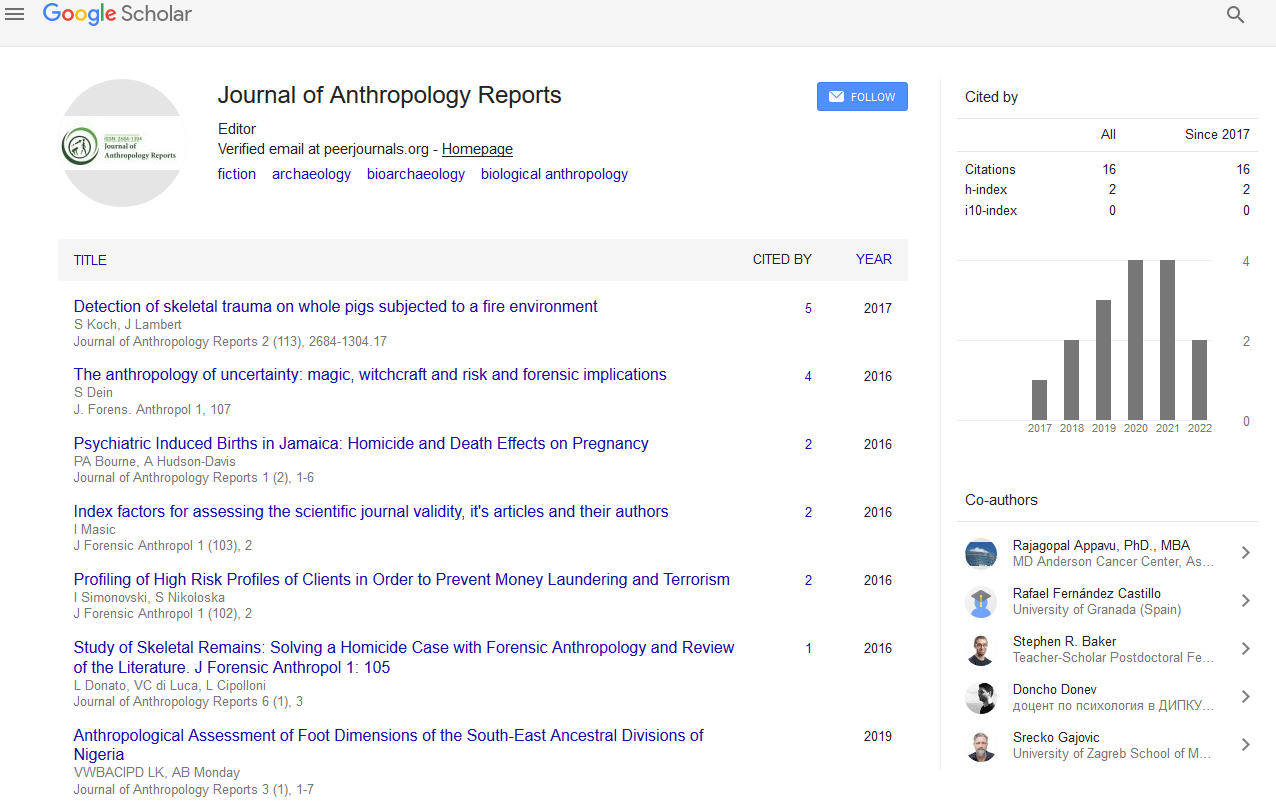Indexed In
- RefSeek
- Hamdard University
- EBSCO A-Z
Useful Links
Share This Page
Journal Flyer

Open Access Journals
- Agri and Aquaculture
- Biochemistry
- Bioinformatics & Systems Biology
- Business & Management
- Chemistry
- Clinical Sciences
- Engineering
- Food & Nutrition
- General Science
- Genetics & Molecular Biology
- Immunology & Microbiology
- Medical Sciences
- Neuroscience & Psychology
- Nursing & Health Care
- Pharmaceutical Sciences
Perspective - (2022) Volume 5, Issue 3
Bioarcheology for the Study of Humans
Anja Petaros*Received: 02-May-2022, Manuscript No. JFA-22-17077; Editor assigned: 04-May-2022, Pre QC No. JFA-22-17077(PQ); Reviewed: 20-May-2022, QC No. JFA-22-17077; Revised: 27-May-2022, Manuscript No. JFA-22-17077(R); Published: 07-Jun-2022, DOI: 10.35248/2684-1304-22.5.128
About the Study
The study of human remains in an archaeological environment is known as bioarchaeology or osteoarchaeology. It can also refer to the study of any biological remains fauna and flora discovered at an archaeological site in a broad sense. However, the phrase is increasingly being applied to the identification and retrieval of human skeletal remains in the field, as well as laboratory analysis of osteoarchaeology.
Bioarchaeology is contributing to archaeological interpretation and to provide new perspectives on previous cultural patterns and processes. Skeletal biology, a cornerstone discipline in physical and biological anthropology, lays the foundation for analyzing human remains that have been recovered. However, bioarchaeology is first and primarily an archaeology science. From individual burial features or commingled ossuaries to funerary analysis of burial patterning across time and geography, it necessitates a thorough grasp of the contextual components of site creation. Bioarchaeology should be viewed as a comprehensive process in which interdisciplinary efforts inform and improve on the archaeological record's results. In the examination of human remains from archaeological sites, coordination of different data sets has been the exception rather than the rule.
Bioarchaeologists, in particular, who must balance aspects of biology, archaeology, and culture when reconstructing ancient societies, must be meticulous. These researchers are improving their ability to gain a better knowledge of skeletal and dental remnants, which both communicate stories. To the trained eye, bones contain a wealth of information about a person's life. Due to variances in male and female anatomy, a bio archaeologist can typically determine an individual's sex. Cranial and pelvic characteristics, for example, are frequently used to sex a skeleton. But there's still a lot to discover. The physical pressures that humans undergo throughout the course of their lives have a noticeable impact on their bones. Bone loss can occur as a resultof a sedentary lifestyle. The bones of those who perform a lot of hard labour, on the other hand, are usually stronger and larger.
To gain a more comprehensive view of a culture, a bioarchaeologist can combine established information of an excavation site with these kinds of bone-based indications. It would make sense if the bones came from a burial cemetery of people who were thought to be impoverished laborers, doing the most difficult work in their society, that their bones represented their lifestyles. Dental relics can potentially reveal information about an ancient person's life. When youngsters are malnourished or have a bad infection that causes fevers or diarrhea, the thick enamel that protects their teeth is sometimes disrupted.
Lines grow in the developing teeth during periods of poor nutrition or sickness; the amount and shape of those lines can reflect how long a person has been without food or infected. Bioarchaeologists can analyse childhood health in persons who died in old age since these lines never disappear. Tooth decay can also be linked to a higher intake of starchy carbohydrates. This is due to the fact that humans have oral bacteria that feed on carbohydrates and, as a result, wear down human teeth more quickly.
The use of molecular chemistry to archaeological artefacts or studies is known as bioarchaeology. The study of molecules has included the research of lipids and other organic deposits inside pottery vessels and other artefacts, blood residue analyses, and opal phytoliths, as well as the study of DNA, the main building block of life. It is an outgrowth of the bioarchaeology of the 1970s. The first attempts to identify unbroken bits of truly ancient DNA appeared to be possible on the surface, and these tests became well known, including the one used in Michael Crichton's Jurassic Park to identify insects trapped in amber.
The process of evolution can be utilized to determine more distant events by analyzing the molecular chains of contemporary DNA, even though DNA does not survive for more than 100 000 years. Human, animal, and plant evolution occur at varying rates: diseases evolve quicker than we can develop treatments for them, while many brachiopod species have remained largely unchanged for millennia. However,evolution happens at a fairly constant rate at the molecular level, undetectable morphologically. The period of time since the previous alteration can be determined by examining DNA strands of modern-day individuals.
Citation: Petaros A (2022) Bioarchaeology for the Study of Humans. J Anthropology Rep. 5:128.
Copyright: © 2022 Petaros A. This is an open access article distributed under the terms of the Creative Commons Attribution License, which permits unrestricted use, distribution, and reproduction in any medium, provided the original author and source are credited.

